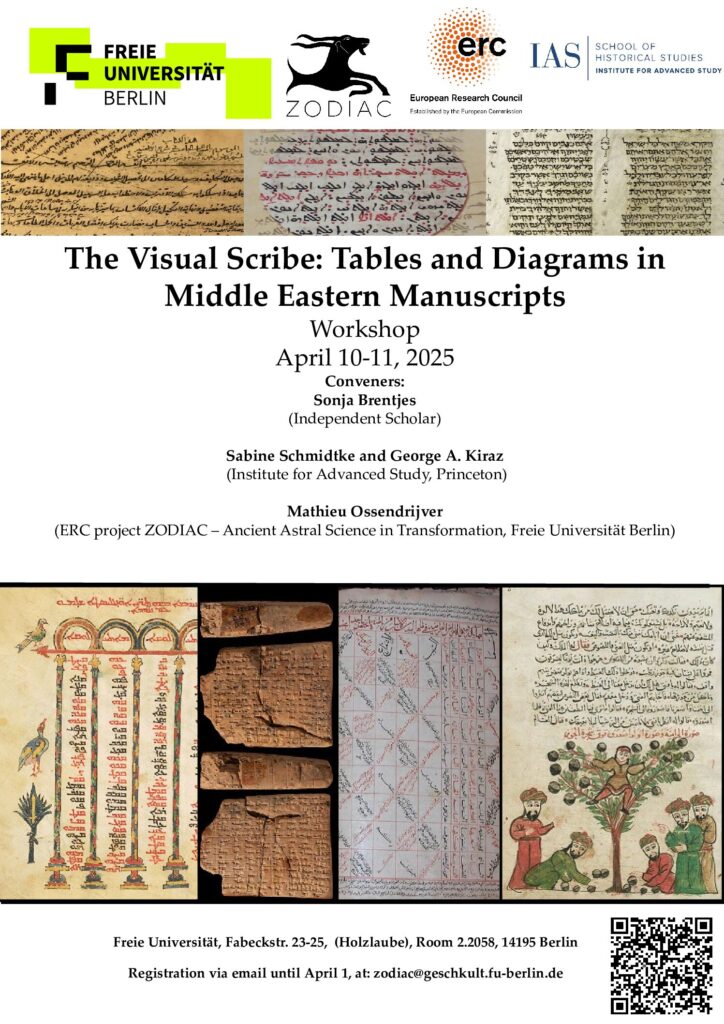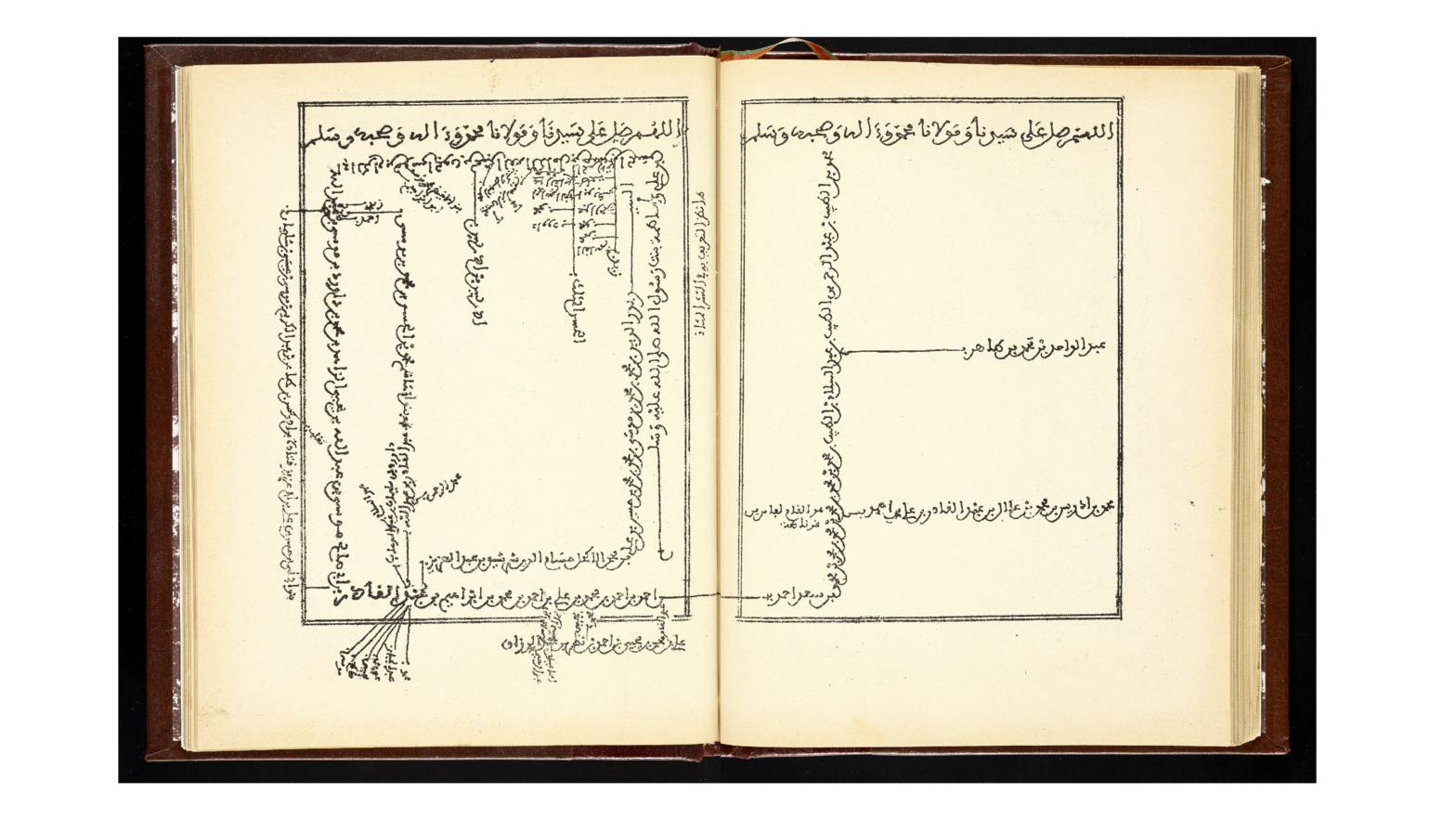Am 10. und 11. April werde ich am Workshop The Visual Scribe: Tables and Diagrams in Middle Eastern Manuscripts in Berlin teilnehmen, mit einem Vortrag über die die Darstellung von Abstammungsverhältnissen in Stammbäumen aus dem westlichen Maghrib im 17. und 18. Jahrhundert.
Wer online oder persönlich teilnehmen möchte, wird gebeten, sich bis 1. April unter zodiac@geschkult.fu-berlin.de anzumelden.
Ankündigung (Freie Universität Berlin) | Programm (Flyer)

Abstract: Visualizing Verified Knowledge: Genealogical Charts in Seventeenth- and Eighteenth Century North Africa
In my contribution, I examine seventeenth- and eighteenth-century genealogical charts from North Africa that are part of detailed genealogical treatises documenting and investigating the lineages of alleged descendants of the Prophet Muḥammad (sharīf, pl. shurafāʾ). Such treatises were written in a historical context in which the Moroccan sultans ordered the compilation of comprehensive, country-wide registers of the Prophet’s descendants in order to counteract the phenomenon of impostors (mutasharrifūn) and to ensure that only “true” descendants of the Prophet received the corresponding privileges. Over time, this gave rise to complex and multilayered genealogical treatises on individual branches of families with prophetic descent. The examples of such works examined in this paper deal with the descendants of ʿAbd al-Qādir al-Jīlānī (d. 561/1166)—a Ḥanbalī scholar and popular saint from Iraq who is said to be of prophetic descent. Some of his descendants, it is said, emigrated to the Iberian Peninsula in the wake of the Mongol conquests, and from there fled to Fez at the end of the fifteenth century. Shortly after their arrival in Fez, the so-called “Qādiriyyūn” seem to have succeeded in being recognized by the local elite as legitimate descendants of the Prophet through the presentation of family documents. As a result, they seem to have successfully integrated into the social fabric of the city of Fez.
This contribution analyzes the genealogical charts contained in the two most important of these works on the descendants of al-Jīlānī in the Maghrib:
- al-ʿArf al-ʿāṭir fī-man bi-Fās min abnāʾ al-shaykh ʿAbd al-Qādir by ʿAbd al-Salām al-Qādirī (d. 1110/1698)
- al-Sirr al-ẓāhir fī-man aḥraza bi-Fās al-sharaf al-bāhir min aʿqāb al-shaykh ʿAbd al-Qādir by Sulaymān b. Muḥammad al-Ḥawwāt (d. 1231/1816)
I will argue that the genealogical charts in the works examined have two main functions: They serve as visual representations of verified knowledge, making the results of textual investigation accessible, and they protect the results of this investigation from subsequent unauthorized changes. By combining visual, textual, and poetic elements, genealogists such as ʿAbd al-Salām al-Qādirī and Sulaymān b. Muḥammad al-Ḥawwāt created a system designed to ensure the integrity of their findings. Thus, I will show that the representations examined in this paper aim to visualize the results of the verification process and make them easily accessible to scholars and genealogical experts.
